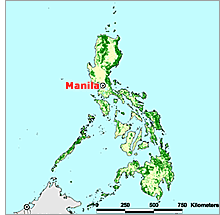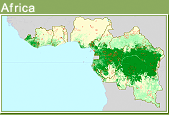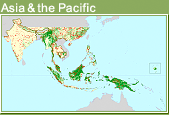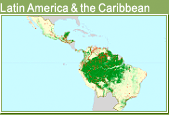Country details
Status of Tropical Forest Management 2005
Asia & the Pacific
Philippines

©UNEP-WCMC 2004
The Philippines has lost a substantial part of its natural forest, and timber production has declined dramatically over the last three decades. Many of the problems associated with the large-scale destruction of the forest resource can be linked to a combination of land and concession tenure issues, and the lack of ability or will to enforce the conditions of the concessions. Moreover, many of the rural poor did not have land tenure and often settled illegally on forest land. Considerable efforts have recently been put into the development of community forestry, but the success of this approach in restoring the country's degraded landscapes, particularly on steep slopes, and in increasing rural incomes, remains to be proven.
Key points
- An area of 15.9 million hectares has been defined legally as forest land (land with greater than 18% slope), but the estimated natural-forest PFE under actual forest cover is only about 6.24 million hectares, comprising 4.70 million hectares of production forest and 1.54 million hectares of protection forest. There are also an estimated 274,000 hectares of plantation.
- At least 76,000 hectares of natural-forest production PFE are estimated to be sustainably managed. No estimate could be made of the extent to which the protection PFE is so managed.
- While commercial-scale concessions (using what are called 'timber licence agreements' – TLAs) have been the main mechanism for allocating logging rights in the past, forest management is now being conducted largely under community-based approaches; TLAs will be completely phased out by 2006.
- The contribution of the industrial forest sector to the national economy has declined dramatically in recent years and stood at only 0.05% of GDP in 2002.
- On the other hand, an estimated 18–20 million people are dependent on forest lands (not necessarily forested) for subsistence uses and traditional and customary lifestyles.
- DENR is the government agency responsible for forest management and protected areas; a degree of administrative decentralization has been pursued in recent years.
- The Philippines is a net importer of timber.
- The Philippines has a large number of endangered species. In its protected-area network of 6.85 million hectares, the estimated extent of forests is 1.54 million hectares.

 Africa
Africa  Asia & the Pacific
Asia & the Pacific  Latin America & the Caribbean
Latin America & the Caribbean